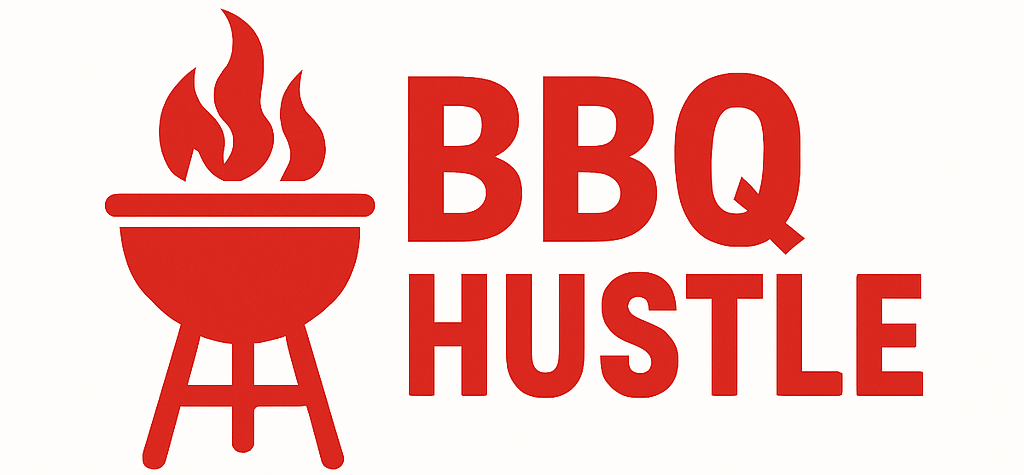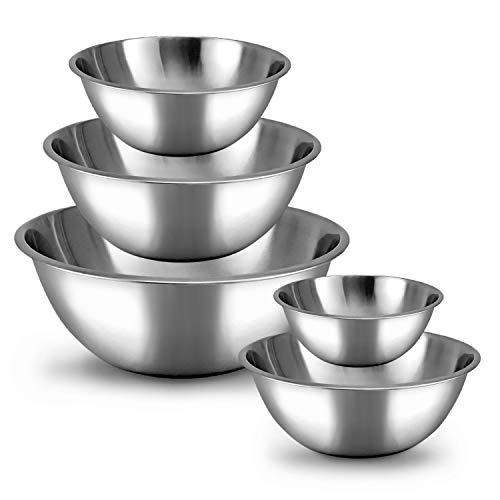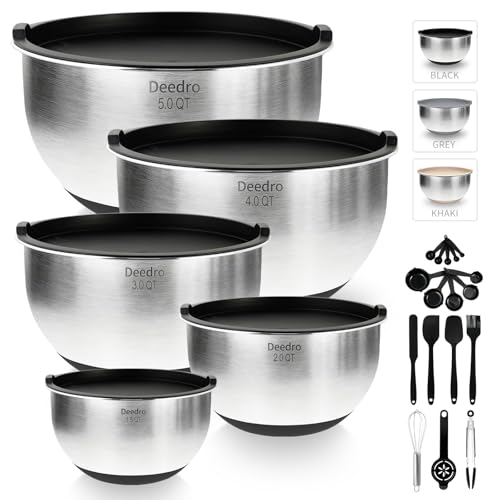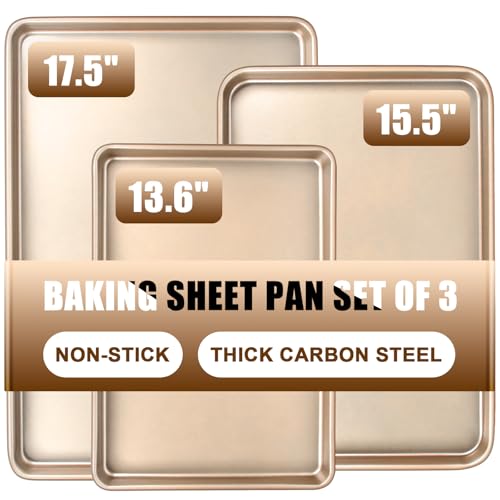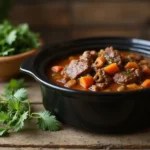There’s nothing quite like the aroma of perfectly seasoned smoked chicken wafting through your backyard. The secret to achieving that restaurant-quality flavor lies in creating the perfect dry rub blend that penetrates deep into the meat and creates an irresistible crust.
We’ve spent countless hours perfecting this smoked chicken dry rub recipe that transforms ordinary chicken into a smoky masterpiece. Our blend combines aromatic spices with the perfect balance of heat sweetness and savory depth that’ll have your guests asking for the recipe every single time.
Whether you’re a seasoned pitmaster or just starting your smoking journey this foolproof dry rub delivers consistent results that rival any barbecue joint. The best part? You probably already have most of these pantry staples in your kitchen right now so you can start creating mouthwatering smoked chicken today.
Ingredients
Our signature smoked chicken dry rub requires just a handful of carefully selected spices that work together to create complex layers of flavor. We’ve organized these ingredients into two simple categories to make preparation effortless.
For the Dry Rub
- 2 tablespoons brown sugar
- 1 tablespoon paprika
- 1 tablespoon kosher salt
- 1 teaspoon garlic powder
- 1 teaspoon onion powder
- 1 teaspoon ground cumin
- 1 teaspoon chili powder
- 1/2 teaspoon black pepper
- 1/2 teaspoon cayenne pepper
- 1/2 teaspoon dried thyme
- 1/4 teaspoon smoked paprika
For the Chicken
- 1 whole chicken (3-4 pounds), cut into pieces
- 2 tablespoons olive oil or melted butter
- Paper towels for patting dry
Equipment Needed

Creating the perfect smoked chicken starts with having the right tools at our disposal. We’ve compiled a comprehensive list of equipment that ensures our dry rub application and smoking process delivers professional results every time.
Smoker or Grill
Our smoking setup forms the foundation of this recipe. A dedicated smoker provides optimal results, though we can achieve excellent outcomes using gas, charcoal, or pellet grills with smoking capabilities. The key lies in maintaining consistent temperature control throughout the cooking process.
Wood Chips or Pellets
Quality wood adds the signature smoky flavor that elevates our chicken. We recommend hickory for robust flavor, apple for mild sweetness, cherry for beautiful color, or mesquite for intense smokiness. Each wood type contributes unique characteristics to our finished dish.
Mixing and Measuring Tools
Precision matters when crafting our dry rub blend. We need a medium mixing bowl to combine all spices evenly and measuring spoons for accurate proportions. These basic tools ensure consistent flavor in every batch we prepare.
Storage Answers
An airtight container or jar preserves our leftover rub for future use. Proper storage maintains spice potency and prevents moisture absorption, extending the rub’s shelf life significantly.
Optional Processing Equipment
Advanced home cooks may benefit from a Thermomix, Magimix, or standard blender to create finely ground spice blends. These tools help achieve restaurant quality texture when we want to customize our rub’s consistency.
| Equipment Category | Essential Items | Optional Upgrades |
|---|---|---|
| Cooking | Smoker/Grill, Wood chips | Temperature probe |
| Preparation | Mixing bowl, Measuring spoons | Food processor |
| Storage | Airtight container | Multiple storage jars |
Our equipment selection directly impacts the final results, making proper preparation tools as important as quality ingredients.
Directions
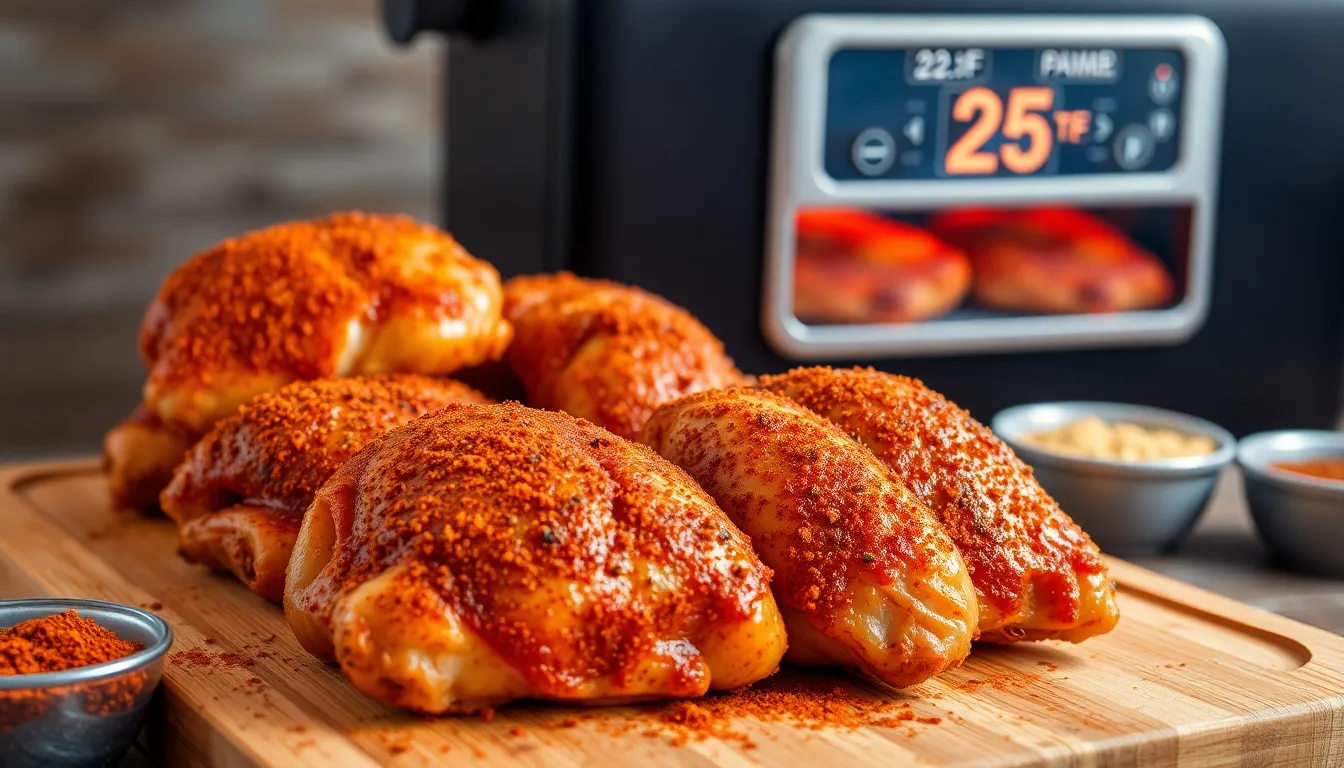
Now that we have our spices measured and equipment ready, let’s walk through the complete process of creating perfectly smoked chicken with our signature dry rub.
Prep the Dry Rub
We start by combining all dry ingredients in a medium mixing bowl. Add the brown sugar, smoked paprika, kosher salt, garlic powder, onion powder, ground cumin, chili powder, black pepper, cayenne pepper, and dried thyme together. Whisk the mixture thoroughly until all spices are evenly distributed and no clumps remain. We can adjust the heat level by increasing or decreasing the cayenne pepper according to our preference. Store any leftover rub in an airtight container for up to 6 months to maintain spice potency.
Prepare the Chicken
Pat the chicken pieces completely dry using paper towels. Removing excess moisture ensures the rub adheres properly and promotes crispy skin development during smoking. We remove any excess fat or loose skin that might prevent even cooking. Room temperature chicken cooks more evenly, so we let the pieces sit out for 30 minutes before applying the rub. Lightly brush each piece with olive oil or melted butter to help the dry rub stick to the surface.
Apply the Dry Rub
Generously coat each chicken piece with our prepared dry rub, working the spices into every crevice and under the skin when possible. We use our hands to massage the rub into the meat, ensuring complete coverage on all surfaces. The chicken should have a thick, even coating of spices that will form a flavorful bark during smoking. Allow the seasoned chicken to rest for at least 30 minutes, though overnight refrigeration produces even deeper flavor penetration.
Set Up Your Smoker
Preheat the smoker to a steady 225°F (107°C) using our preferred wood chips or pellets. Hickory provides a strong smoky flavor, while apple and cherry woods offer milder, slightly sweet notes that complement our spice blend perfectly. We ensure the smoker maintains consistent temperature throughout the cooking process by monitoring the built-in thermometer. Position the water pan if using an offset smoker to help regulate temperature and maintain moisture levels.
Smoke the Chicken
Place the seasoned chicken pieces on the smoker grates, leaving space between each piece for proper air circulation. We avoid opening the smoker frequently, as this releases heat and extends cooking time significantly. The chicken requires 2.5 to 4 hours of smoking time depending on the size of the pieces. Dark meat pieces like thighs and drumsticks may take longer than breast meat to reach the proper internal temperature.
Check for Doneness
Insert a digital meat thermometer into the thickest part of each piece, avoiding contact with bones. We look for an internal temperature of 165°F (74°C) to ensure food safety and optimal texture. Once the target temperature is reached, we remove the chicken from the smoker and let it rest for 10-15 minutes before serving. This resting period allows the juices to redistribute throughout the meat, resulting in more tender and flavorful chicken.
Smoking Tips and Techniques
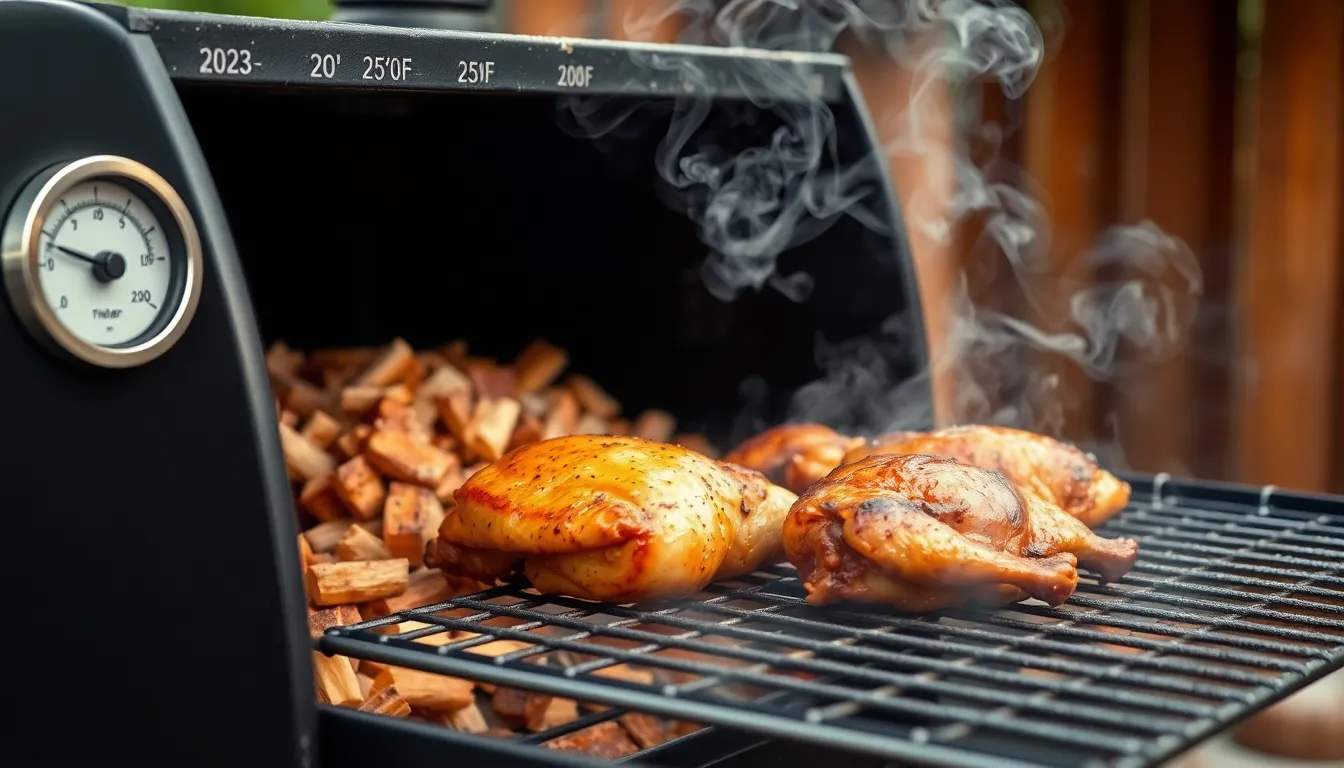
Now that we have our dry rub prepared and applied, mastering the smoking process ensures our chicken develops that coveted smoky flavor and perfect texture. These essential techniques transform good smoked chicken into exceptional barbecue.
Temperature Control
We maintain our smoker temperature between 225°F and 250°F (107°C to 121°C) for optimal results. This gentle heat range allows the smoke to penetrate the meat while cooking it evenly throughout.
Using a reliable thermometer becomes crucial for monitoring both smoker temperature and internal meat temperature consistently. We check the smoker temperature every 30 minutes to ensure stability. Temperature fluctuations can result in uneven cooking and affect the final texture of our chicken.
The indirect heat method works best for smoking chicken pieces. We position the chicken away from direct heat sources to prevent burning while allowing the smoke to circulate freely around each piece.
Wood Selection
Fruit woods like apple and cherry provide the ideal smoke profile for chicken. These mild woods impart a sweet, subtle flavor that complements the spices in our dry rub without overpowering the poultry.
Stronger woods such as hickory, pecan, or oak can overwhelm chicken’s delicate flavor. We use these harder woods sparingly or blend them with fruit woods for a more balanced smoke profile. A 70-30 ratio of fruit wood to stronger wood creates an excellent flavor combination.
We soak wood chips for 30 minutes before adding them to the smoker. This prevents them from burning too quickly and ensures a steady stream of smoke throughout the cooking process.
Timing Guidelines
Whole chicken pieces require 2.5 to 4 hours of smoking time at our target temperature range. Larger pieces like breasts and thighs need the full cooking time, while smaller wings and drumettes finish faster.
We use a meat thermometer to check doneness rather than relying solely on time. The internal temperature must reach 165°F (74°C) in the thickest part of each piece for food safety.
Keeping the smoker closed maintains stable temperature and prevents heat loss. We resist the temptation to check too frequently, as each opening can add 15-20 minutes to the cooking time. The mantra “if you’re looking, you’re not cooking” applies perfectly to smoking chicken.
Make-Ahead Instructions
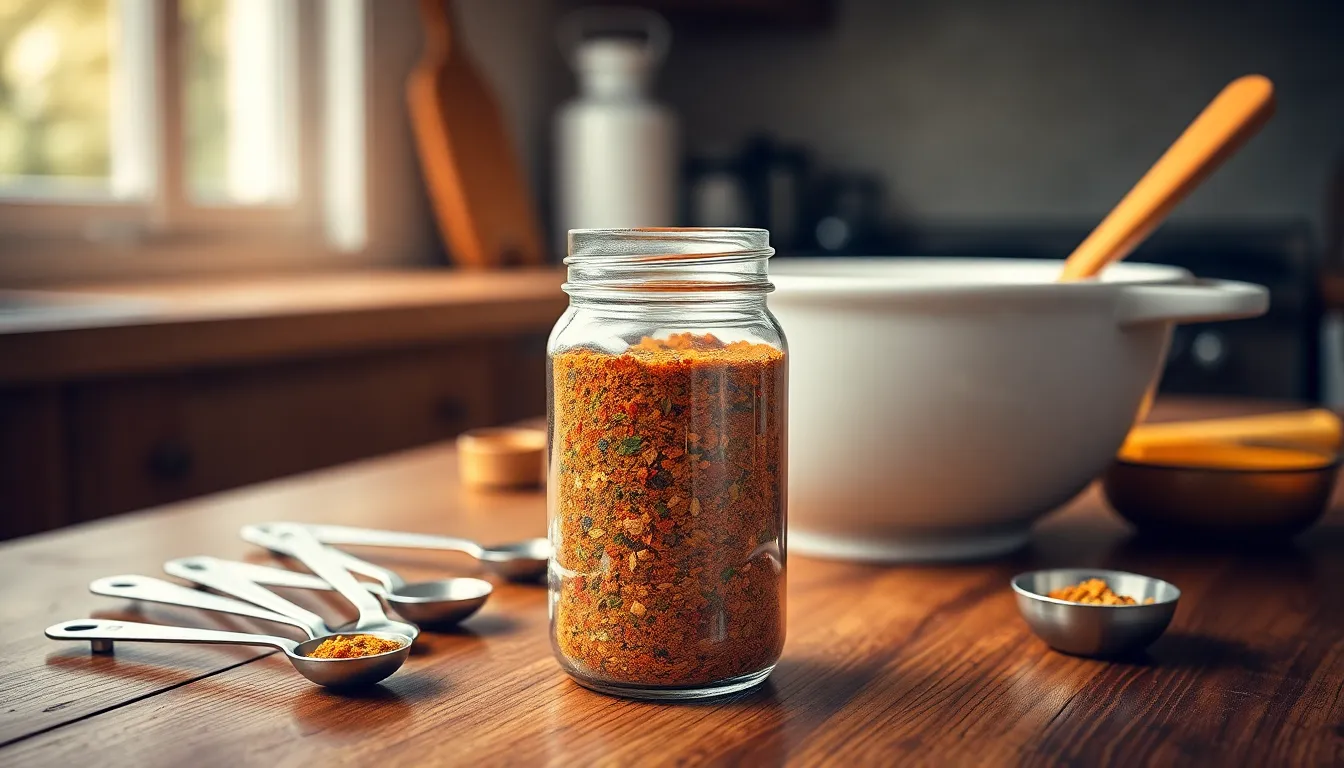
We love preparing our smoked chicken dry rub mixture weeks before our barbecue sessions to streamline our cooking process. The beauty of this spice blend lies in its exceptional shelf stability when stored properly without the addition of oil.
Preparing the Dry Rub Mix
Combine all our dry ingredients in a medium mixing bowl and whisk thoroughly until evenly distributed. Transfer the mixture to an airtight container or glass jar for optimal freshness. We recommend labeling the container with the preparation date to track storage time.
Storage Guidelines
| Storage Method | Duration | Storage Location |
|---|---|---|
| Airtight container | Up to 3 weeks | Cool, dry pantry |
| Glass jar | Up to 3 weeks | Cool, dry pantry |
| Extended storage | Several months | Based on spice freshness |
Store our prepared rub in a cool dry place away from direct sunlight and heat sources. We avoid adding olive oil to the mixture during initial preparation since oil reduces the rub’s shelf life significantly.
Application Day Instructions
Remove the dry rub from storage and measure the needed amount for your chicken portions. Add approximately 3 tablespoons of olive oil to the rub just before application to create that coveted crispy skin and enhance flavor penetration. Mix the oil and spice blend until it forms a paste-like consistency.
Batch Preparation Tips
We often double or triple our dry rub recipe to have multiple batches ready for spontaneous smoking sessions. This approach saves considerable prep time and ensures consistent flavor across all our barbecue endeavors. Store each batch in separate containers to maintain freshness and prevent contamination.
The make ahead approach transforms our smoking routine from a time consuming process into an efficient culinary experience that delivers restaurant quality results every time.
Storage and Reheating
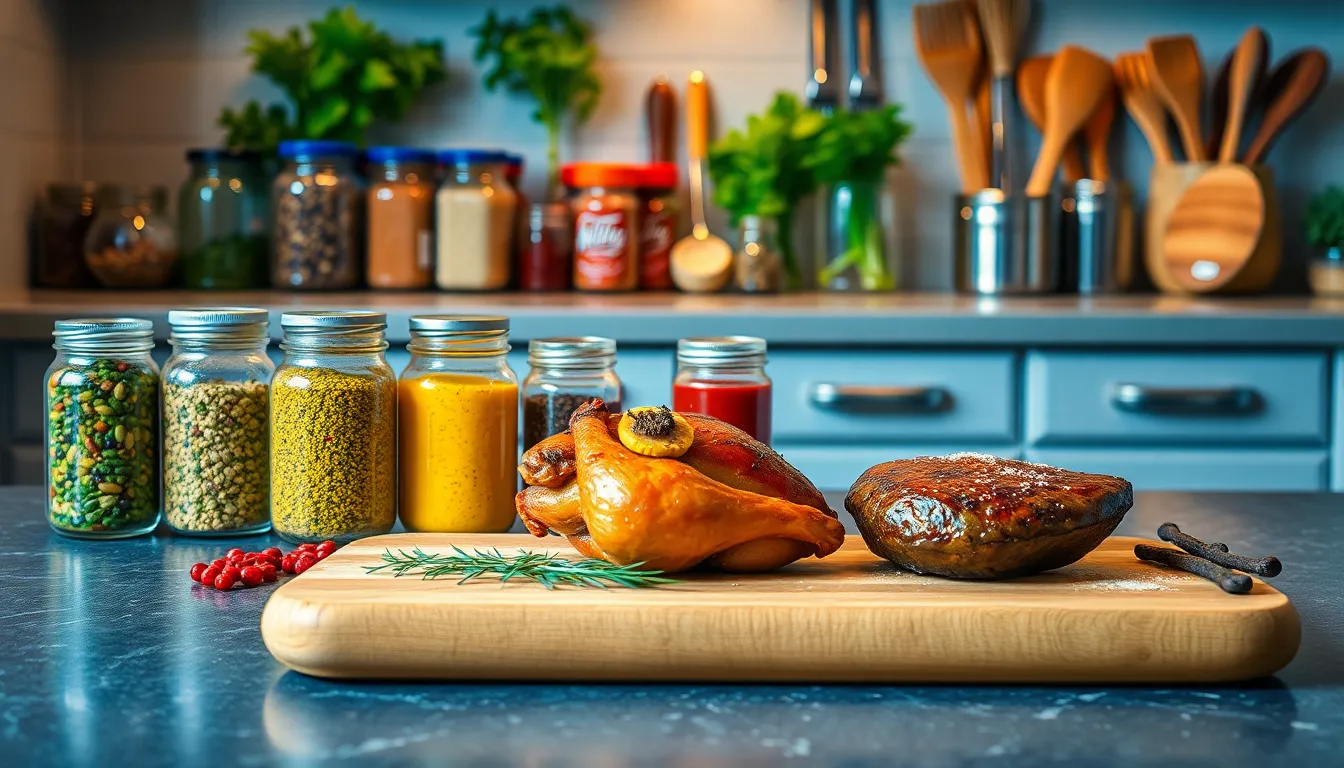
Storing Your Dry Rub
We recommend preparing larger batches of our smoked chicken dry rub to save time on future cooking sessions. Store the dry rub mixture without oil in an airtight container or glass jar with a tight-fitting lid. Label the container with the preparation date to track freshness.
The dry rub maintains its best flavor for 6 to 12 months when stored in a cool, dry place away from direct sunlight. We suggest keeping it in your pantry or spice cabinet where temperatures remain consistent.
| Storage Method | Duration | Best Practices |
|---|---|---|
| Airtight container | 6-12 months | Cool, dry place |
| Glass jar | 6-12 months | Label with date |
| Refrigerated storage | Up to 1 year | Extended freshness |
Add olive oil only when you’re ready to apply the rub to your chicken. Oil reduces the shelf life significantly and can cause the mixture to become rancid over time.
Properly Reheating Smoked Chicken
We believe reheating smoked chicken requires gentle heat to preserve both moisture and that coveted smoky flavor. Pat any leftover chicken dry with paper towels before reheating to remove excess moisture.
Set your oven to 250°F to 275°F and place the chicken pieces on a baking sheet. Cover loosely with aluminum foil to prevent the meat from drying out during the reheating process. Heat until the internal temperature reaches 165°F for food safety.
Your smoker or grill offers another excellent reheating option that maintains the authentic barbecue experience. Use indirect heat at the same low temperature range we mentioned for oven reheating. This method helps retain the smoky character that makes our recipe special.
Microwaving presents a quick alternative but often results in dried out chicken with compromised texture. We generally avoid this method when seeking the best possible eating experience. Steam from microwaving can also make the previously crispy skin soggy and unappetizing.
Store leftover smoked chicken in the refrigerator for up to 4 days or freeze for up to 3 months for optimal food safety and quality.
Serving Suggestions
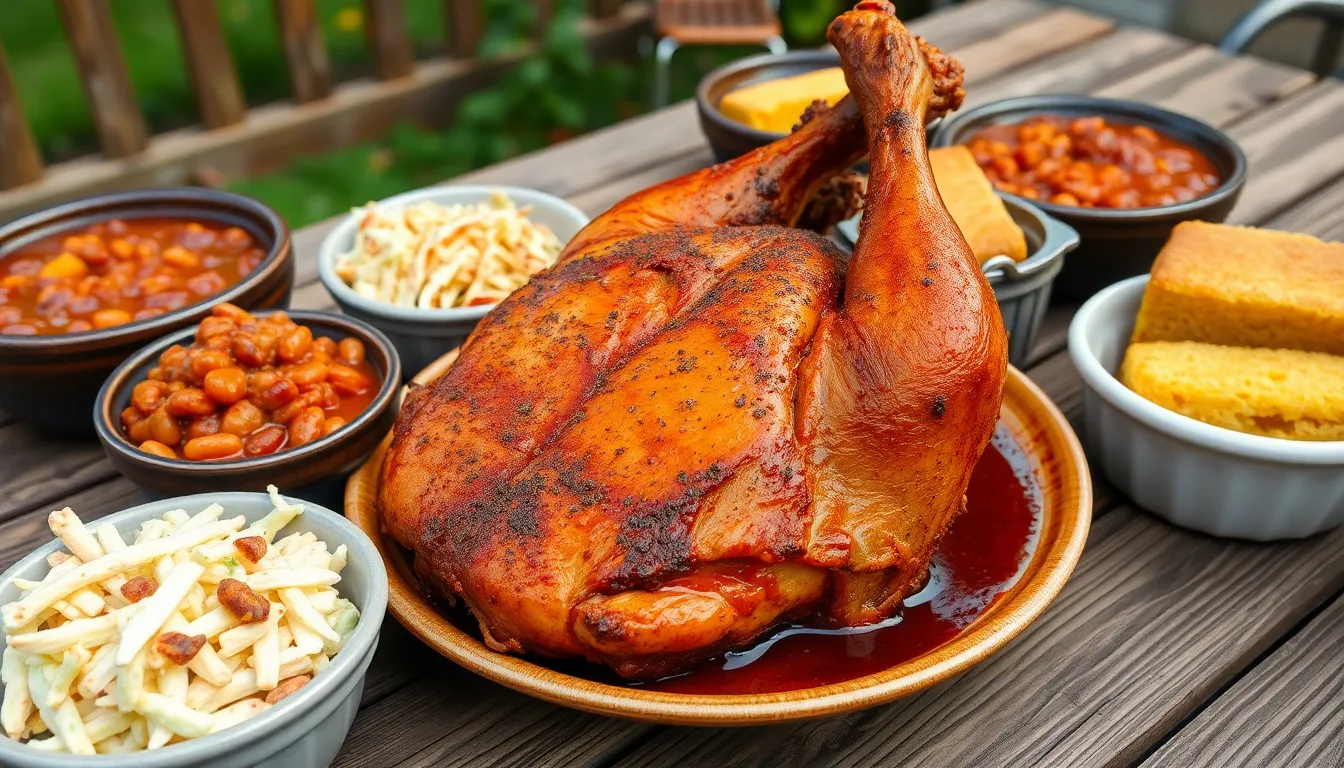
Our smoked chicken dry rub creates incredibly versatile results that pair beautifully with classic barbecue sides and complement various dining occasions. We recommend serving your perfectly seasoned chicken alongside traditional favorites like creamy coleslaw, smoky baked beans, and warm cornbread to create an authentic barbecue feast.
Classic BBQ Pairings
Grilled vegetables make an excellent accompaniment to our dry-rubbed smoked chicken, adding fresh flavors that balance the rich, smoky taste. We love pairing drumsticks and thighs with corn on the cob, grilled bell peppers, and zucchini for a complete outdoor dining experience. Potato salad and mac and cheese round out the meal with hearty, comforting sides that guests always appreciate.
Versatile Protein Applications
This dry rub works exceptionally well beyond chicken, transforming turkey and pork into equally delicious smoked meats. We apply the same seasoning blend to turkey breasts for holiday gatherings and pork shoulders for pulled pork sandwiches. The robust smoky flavor profile adapts perfectly to different proteins while maintaining its signature balance of sweet, savory, and spicy notes.
Finishing Techniques for Enhanced Flavor
After smoking your chicken to perfection, we recommend finishing it on a high-heat grill for just a few minutes to enhance crispiness and intensify the flavors. This technique creates an irresistible contrast between the tender, smoky interior and the crispy, caramelized exterior. Wings particularly benefit from this finishing method, developing an addictive texture that keeps everyone coming back for more.
Meal Planning and Serving Options
Our dry-rubbed smoked chicken serves as the centerpiece for casual weeknight dinners, weekend gatherings, and special occasions alike. We suggest cutting whole chickens into individual pieces for easier serving and faster cooking times. Chicken breasts work wonderfully for those preferring leaner cuts, while drumsticks and thighs offer the richest flavor due to their higher fat content.
The seasoning blend also functions as an excellent all-purpose rub for grilled and roasted poultry, extending its versatility beyond smoking applications. We often use it for quick weeknight meals when smoking time isn’t available, achieving delicious results in the oven or on the stovetop.
Conclusion
We’ve shared everything you need to master this exceptional smoked chicken dry rub recipe. The carefully balanced blend of spices creates that perfect restaurant-quality flavor we all crave while remaining simple enough for any home cook to execute.
This versatile rub opens up countless possibilities for your barbecue adventures. Whether you’re planning a weekend cookout or meal prepping for the week ahead the results will consistently deliver that smoky perfection your family and friends will remember.
Fire up your smoker and let this proven recipe transform your next chicken into something truly special. We’re confident you’ll find yourself reaching for this dry rub blend again and again.
Frequently Asked Questions
What temperature should I smoke chicken at?
Smoke chicken at 225°F (107°C) for best results. This low temperature ensures even cooking and allows the smoke to penetrate the meat properly. You can go up to 250°F (121°C) if needed, but maintain consistency throughout the cooking process for optimal texture and flavor.
How long does it take to smoke a whole chicken?
A 3-4 pound whole chicken takes approximately 2.5 to 4 hours to smoke at 225°F. The exact time depends on the chicken’s size and your smoker’s consistency. Always check for an internal temperature of 165°F (74°C) in the thickest part of the thigh to ensure food safety.
Can I make the dry rub ahead of time?
Yes, you can prepare the dry rub in advance. Store it in an airtight container or glass jar in a cool, dry place for 6 to 12 months. However, only add olive oil when you’re ready to apply the rub to prevent rancidity and maintain freshness.
What wood chips work best for smoking chicken?
Fruit woods like apple and cherry are ideal for smoking chicken. They provide a mild, sweet smoke that complements the poultry without overpowering it. Soak wood chips before use and avoid stronger woods like hickory or mesquite, which can make chicken taste bitter.
How do I store leftover smoked chicken?
Store leftover smoked chicken in the refrigerator for up to 4 days or freeze for up to 3 months. When reheating, use gentle heat in an oven or smoker at low temperatures to preserve moisture and flavor. Avoid microwaving as it can make the chicken tough and dry.
What sides pair well with smoked chicken?
Classic barbecue sides complement smoked chicken perfectly. Try creamy coleslaw, smoky baked beans, warm cornbread, mac and cheese, or grilled vegetables. These sides balance the rich, smoky flavors and create a complete barbecue meal experience for your guests.
Can I use this dry rub on other meats?
Absolutely! This versatile dry rub works excellently on turkey and pork as well. The blend of spices provides the perfect balance of heat, sweetness, and savory flavors that enhances various proteins beyond just chicken, making it a valuable all-purpose seasoning.
Should I remove the skin before applying the dry rub?
No, keep the skin on when smoking chicken. The skin helps protect the meat from drying out and becomes deliciously crispy when smoked properly. Pat the skin dry with paper towels before applying the rub with olive oil for the best results and enhanced flavor penetration.
